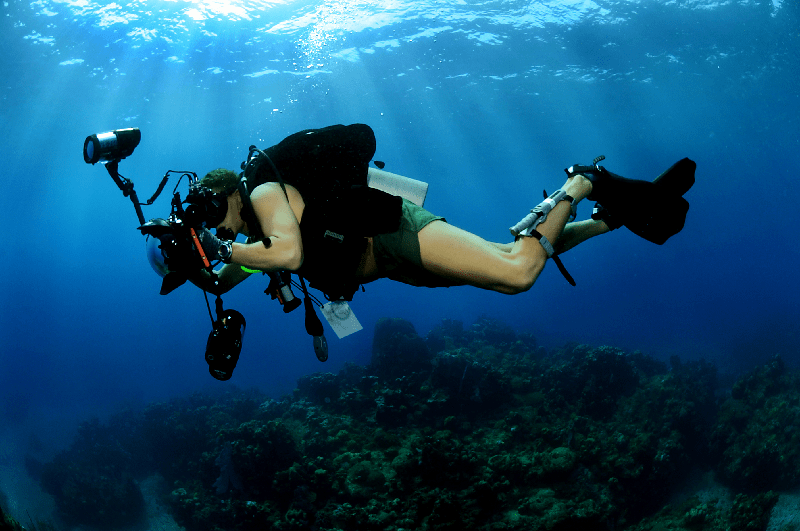Last Updated on January 13, 2019
The beach of anywhere else near water provides lots of opportunities for photographers. But sometimes, you also want to document what happens underneath the surface. Marine life is rich in many places and are worthy of being captured and memorialized in a photograph, especially with today’s rapidly changing climate; what you photograph today may look starkly different tomorrow. That said, how to you get started with underwater photography?
 Is money and issue or not?
Is money and issue or not?
It’s generally recommended that you start off your adventures with a point and shoot camera. After all, a number of makers like Olympus build their underwater cameras tough. A GoPro is also a good action camera to start with and is perfectly capable of taking really good shots.
Why start with a point and shoot exactly? It gives you a feel of things, plus it’s a benefit when it comes to money. A number of action cameras cost less than the best DSLRs or mirrorless cameras available today. In short, they are financially prudent and they don’t always disappoint. Sure, there are scenes that could have been captured better but if you’re looking for an economical option, an action camera is your best bet. The point here is to improve your skills first before moving on to pricier objects.
Then again, if money is not an issue, you can always get the best camera gear and lighting equipment.
Underwater photography guide
- Exercise patience
Underwater photography is a lot more difficult than regular photography. Being submerged in water is in itself a challenge. It will take a lot of time getting used to, especially if you have to travel far just to get near a body of water.
Expect to take a lot of photographs as well – it’s the only way you’ll learn about the underwater environment and your own camera. Tinker with the settings until you fully understand how each one affects the other. Learn to observe the light and the environment as doing so helps you take better shots.
- Use a wide angle lens
A wide angle lens helps you capture a lot of elements into one shot. Plus, composing a shot through a viewfinder can be a bit difficult with a DSLR when underwater. It helps to shoot in RAW, if available, so you can easily make changes in post. It’s also best to preset the camera, especially when using underwater housing. A suggested setting could be: auto ISO, aperture between f/2.8 to f/5.6 (depending on lens), and shutter speed at 1/800th.
- Get close when photographing animals
It doesn’t matter if you see a grouper or a clownfish, getting just a tad bit closer to your subject can make a whole lot of difference in your shots. Water is denser than air so it drains color, but getting closer allows you to capture clear images with great contrast and bright colors.
- Try a different perspective
Your photos will start to look bland if all of them are shot using a downwards angle. Why not point your camera to the life up above as well? Half-water, half-ocean shots offer a different perspective.
- Be a good swimmer or diver
You need to be submerged under water to take a shot and that entails knowing how to swim. If you want to move on to more challenging shots of caves and bigger marine life, it’s highly recommended that you learn how to dive.
Underwater photography gives us a glimpse of creatures and other life living beneath the surface. And once you’ve mastered the basics, you will gain the confidence needed to shoot more creative shots.
 Is money and issue or not?
Is money and issue or not?

